Toyota tops, Lexus climbs
/Even with full registrations data yet to come out, there was never any doubt who led the way in 2023.
Read MoreEven with full registrations data yet to come out, there was never any doubt who led the way in 2023.
Read MoreMunich admits current remedial action will costs many millions.
Read MoreBattery-pure i5 will release purely in a top spec, for just under $200k. So is this the end of everyday fossil-fuelled Fives?
Read MoreOne of the worlds’ most important motor shows has returned to post pandemic health.
Read MoreTwelve cars from 10 brand, most electric-involved and spanning a diversity of formats, price and uses.
Read MoreThe fastest M car is coming to NZ. Is it is set to be too good to risk putting on the road?
Read More2.5 million kilometre workout for Spectre ahead of 2023 on-sale
Read MorePreviously only a digital mock-up first shown last November, Mini’s self-driving city electric, the Urbanaut, has now been built into a full-scale model.
Read More
bmw head office’s unveiling of the production i4 has synched with the announcement of the iX (below) model lineup for our market.

ANOTHER electric moment from BMW, with delivery of local distributor information about incoming versions of the iX electric crossover synching with the parent in Germany revealing its next wholly battery car, the i4 four-door coupe.
Germany’s images of the i4 show a production-ready car, unveiled a year after the namesake original design study was shown.
The big difference? The one signed-off for NZ driveways will have four doors, not two, and so sit and badge as an alternate to the combustion engine-wed 4-Series Gran Coupe, with which it shares a platform and significant styling detail.
A lot of technical detail remains withheld, but BMW says the model will deliver up to 590km of range from a single charge on the WLTP cycle and will offer a maximum of 390kW.
Earlier reports suggest this will only be available in short bursts from the performance-focused, range-topping variant, expected to be named the i4 M50. An entry-level eDrive35 and a mid-spec eDrive40 are also rumoured.


The maker says that power will allow the flagship car to hit 100kmh from a standstill in ‘around’ four seconds, likely with the help of all-wheel drive. That sprint time, and the range, are equivalent to figures claimed for Tesla’s Model 3 Long Range.
Game on? Well, presumably yes, though BMW seems dead set on teaching the American make a thing or two about dynamics. Though detail about the chassis tuning is being held back, it is on record as saying that 'simply going fast in a straight line is not enough'.
Pieter Nota, member of the board of management of BMW AG responsible for Customer, Brands and Sales, has also since commented: "With its sporty looks, best in class driving dynamics and zero local emissions, the BMW i4 is a true BMW. It makes the heart of the BMW brand now beat fully electric."
BMW's policy of making its full electric vehicles (EVs) appear as conventional as possible is strongly evidenced by i4. Blue accents and aero wheels separate it from the upcoming 4 Series GC, as do the redesigned bumpers and the lack of exhaust tips at the back. Both the EV and ICE editions seem destined to have a common frontal styling, including that oversized kidney grille.
By the time i4 shows, BMW should have iX well settled into the market – it’s set to launch in the fourth quarter of 2021, after all.
BMW NZ has settled on choice of two battery and electric motor options: the entry-level xDrive40, and the flagship (at launch, at least) xDrive50.
The first mates two electric motors with a lithium-ion battery offering ‘over’ 70kWh of gross energy capacity, good for a power output of 240kW, and a sub-6.0-second 0-100kmh sprint time.
Maximum driving range according to Europe's WLTP test cycle sits at more than 400km, according to BMW, with a combined energy consumption rating of less than 20kWh per 100 kilometres claimed.


The iX xDrive50, meantime, brings more than 370kW from a larger 100kWh-plus battery pack, enabling a sub-5.0-second dash from zero to 100kmh, a WLTP range of above 600km, and combined energy consumption of under 21kWh/100km.
DC fast charging is standard on both variants, at a rate of up to 150kW in the xDrive40, or 200kW in the xDrive50. A 10-minute stint on a DC charger is said to add up to 90km and 120km of range to the 40 and 50's batteries respectively, with both models capable of a 10 to 80 percent charge in 40 minutes, according to the BMW information sheet.
There’s talk overseas that the iX lineup will eventually be headed by an M60 model, set to enter production in March 2022 with a 418kW version of the xDrive50's powertrain.
BMW confirmed the new iX would employ a number of sustainable materials through its construction, including up to 60kg of recycled plastic.
Recovered fishing nets will be used in the floor mats, rare-earth materials have been omitted from the electric motors, cobalt and lithium for the batteries are sourced ethically from ‘controlled’ mines in Australia and Morocco, while the interior features FSC-certified wood, olive leaf extract-tanned leather, and other naturally-sourced materials.
The iX also debuts (with i4 being the second recipient) the eight generation of the iDrive infotainment system, which combine a 12.3-inch instrument display and a 14.9-inch central touchscreen into a single curved panel and is now technically known as BMW Operating System 8.
BMW says that iDrive 8 will be able to: "adjust to the driver's individual needs and routines, as well as the situation at hand" and will be: "a central operating channel of human-machine interaction."
Even though the familiar iDrive controller click-wheel is retained – and is now made from glass and with a gold bronze bezel – the big idea for iDrive 8 is to move beyond the traditional twist-and-click rotary controller and move more and more into direct speech control, with you being able to chat to your BMW's dashboard and interact with it using natural language, rather than pre-set commands.
There is, of course, a digital voice assistant in the dash, called the BMW Intelligent Personal Assistant, and you can, by voice, interact with it, and it will get to learn your daily routine and regular needs and wants. There's also a new BMW ID, in which you can store various personal preferences and easily transfer them from one BMW to another.
There's also a new 'My Modes' setting, which allows you to customise and personalise different operating modes for the car, including Efficient, Sport and Personal Modes. The activated configuration is indicated by variations in the artwork specially developed for My Modes, the style and layout of the displays, and a change in the display colour, which adapts to the experience setting in the same way as the ambient lighting. Switching between My Modes produces acoustic changes, too, including adjustment of the engine or motor sound.

A few years back, BMW joined a car brand cabal that bought mapping and navigation company HERE from Nokia. That spend is going to pay off in iDrive 8, with a new BMW Maps function. Just like Google Maps and Apple Maps, BMW Maps will gradually learn your regular destinations, and will present them to you as options, rather than you having to regularly enter them. The system will be able to direct you around traffic hold-ups and will guide you to charging points if you need to top-up the battery.
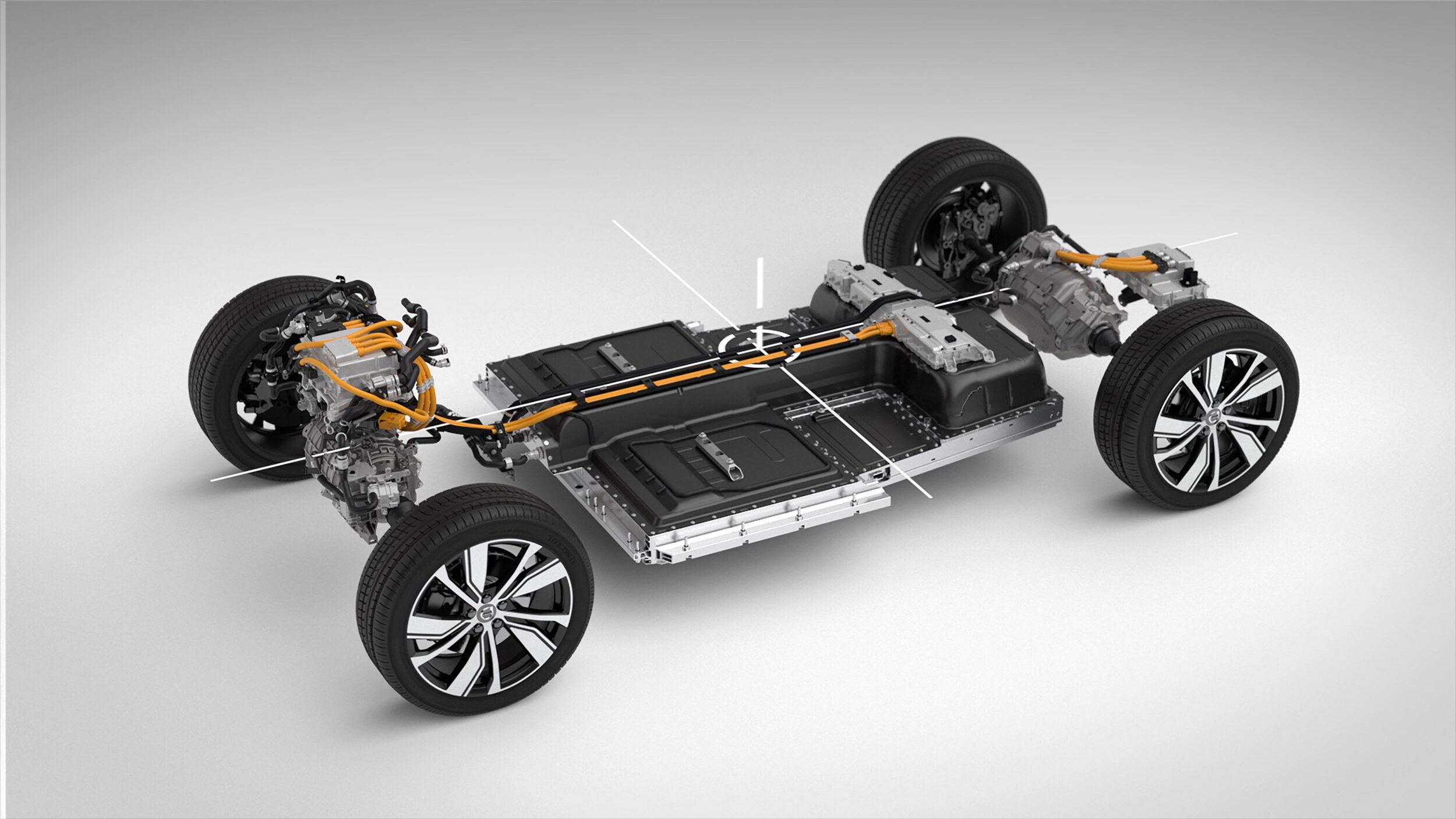
LAST year brought some astounding introductions to the electric vehicle sector – not only brilliant new prestige models for those unrestricted by budget consideration.
We also witnessed the cheapest new electric car in the market getting even cheaper; a repricing of the MG ZS EV to $48,990 was a surprise bombshell – that sticker being $7000 below a price first proposed that, in itself, would have positioned this model advantageously.
As is, NZ motorists are now enjoying their first sub-$50,000 brand-new fully electric car, retailing for $1000 less than the ‘special introductory price’ that was offered to the first 50 orders, when that book was opened in 2019.
It’s hard to see that feat being bettered in 2021, but perhaps it might.
Certainly, we’ll have even more electric cars to consider this year, several from mainstream makers, including a market leader which is fully versed in the art of successful sales craft.
So, anyway, here in alphabetical order are the new EV models slated to arrive within the next 12 months.

AN electric fan blowing down a long metal cylinder … captured by specialists and further modified and built on was among a total of 32 individual audio elements that have gone in creating the special sound track that gives Audi’s performance EV rather special aural signature. It’s said to be something similar to a jet engine powering up, with the noise modulating based on the engine data, before it is projected from a loudspeaker at the front of the vehicle. Speed and throttle position change the tone.
Sounding a bit strange? Well, noise is important to cars, but for a different reason in respect to EVs. For sure, Audi would like to create a frisson of excitement, but also they’re having to bear in mind that the European Union and the United States have introduced regulations mandating all electric cars emit an external sound for the benefit of pedestrians – up to 20kmh and 32kmh respectively.
It’s doubtless an element of the first Audi RS model to go fully electric, skipping the plug-in hybrid stage altogether and beating hi-po rivals BMW M and Mercedes-AMG to market with emissions-free motoring, that will be a subject of some discussion when this hot shot lands around mid-year.
In terms of performance temperature, think an obvious barometer. The RS E-Tron GT is very closely related t the Porsche Taycan; they are not doppelgangers in styling nor in technology application, outputs alter as do even electric motor count (plus they’re built in different factories), but they do use a common platform.
The GT will deliver is two formats, the RS being the top dog. In the latter power comes from high-energy 83.7kWh (93kWh gross) battery that feeds two synchronous motors – a 175kW motor powers the front axle and is shared with the regular e-Tron GT, but the rear is larger and more powerful, at 335kW. Just like the Taycan, there’s a two-speed transmission on the rear axle, and a focus on coasting rather than recuperation to extend battery range.
Charge times will also be equivalent to the Taycan, with a maximum DC charging capacity of 270kW, for a theoretical 100km of range in 5 minutes. A 50kW DC charger boosts the battery from five to 80 percent in around 1.5 hours, or 22kW AC charger from 0-100 percent in around 4.5 hours.
As with Porsche, Audi is also about impressing how the GT’s seriousness by reminding that not only is it coming out of the same high-tech plant as the R8 supercar north of Stuttgart in Germany but (and take this as a thinly-disguised swipe at Tesla) the build quality will be superb. For instance, Audi is employing precision machines that can measure surface inaccuracies on the bodywork within 0.2 of a millimetre.

BMW'S first electric SUV built from the ground up on a new EV platform shares exterior dimensions of an X5, is as tall as an X6 and has the wheelbase of an X7, with very high specification and plush appointments in two levels of bodywork, a standard look and a sport enhancement with more rakish styling elements.
The cockpit uses a lot of inspiration from the iNext concept, including a hexagonal steering wheel and a vast curved digital displays for the driver and front passenger to use.
It also features BMW's new ‘fifth-generation’ electric powertrain tech. We are told that the car will be powered by two electric motors (with no rare earth elements), producing 'more than' 370kW, which comprehensively beats the 300kW EQC and e-tron 50 and 55 (respectively 230kW and 300kW).
Apparently the iX will do 0-100kmh in under five seconds, but of greater importance is the efficiency and range between charges. BMW expects the car will average 21kWh per 100km on the WLTP cycle, resulting in a range of more than 600km from its 100kWh battery pack.
Recharging times are also impressive … when the right hardware is in place. The iX3 can be DC fast-charged at up to 200kW, allowing 10-80 percent charging in under 40 minutes, or 120km range for 10 minutes of charge.
The car premieres a new aluminium space frame that supports an inner carbon cage fabricated from CFRP – for composite plastic and carbon-fibre-reinforced-plastic – covered with a body made out of a combination of aluminium and CFRP. The latter is a material BMW has become accustomed to working with as it features intensively in the i3 and now discontinued i8 plug-in hybrid sports car.
For the first time in a modern-day BMW model, the iX will feature a fixed clamshell style bonnet. A series of aerodynamic developments, including the blanked-off grille, minimal air ducting within the front bumper, flat underbody panelling, integrated door handles with an electronic opening mechanism and the tapered glasshouse, contribute to a claimed drag coefficient of 0.25.
Full LED main beams are standard, though buyers will also be able to specify BMW’s Laser lights as an option. At the rear, the iX’s narrow tail lamps receive LED functionality as standard.
Look for it in the second half of 2021.

Likely to be pitched as a competitor for three like-sorted models already on sale here - the Mercedes EQC, Audi e-tron and Tesla Model X – though differing from those in being more obviously based on an existing model.
The iX3 nonetheless represents an important step. It’s not just BMW’s first electric SUV, but also the first BMW to be available with either pure combustion, plug-in hybrid or pure electric power.
The X3’s platform has been adapted with a new rear sub-frame that houses a single electric motor and an 80Wh battery pack – yes, it’s exclusively rear-drive - that, BMW says, is 20 percent more energy dense than any battery it has used before.
Output is to the tune of 210kW and 400Nm and a 6.8-second 0-100kmh sprint is claimed. BMW says it’ll provide an impressive 460km range, as determined on a WLTP test cycle. Using fast-charging, the iX3 is capable of receiving 80 percent charge in 34 minutes.
BMW is talking up the car’s adaptive energy recuperation system, which it claims automatically enhances efficiency on longer drives. Using location data from BMW’s latest cloud-based navigation system, the iX3 can autonomously change the level of braking recuperation on the move and according to the road ahead. For instance, if the car recognises that a stop sign is ahead, full recuperation will be deployed without any need for the driver to select it.
Alternately, the driver can take manual control of the regenerative braking, with three levels of resistance availed. A ‘B’ position on the Drive selector enables high enough energy recovery for one-pedal driving around town, a trick the brand appears to have nabbed from Toyota/Lexus.
The iX3 gets a unique tune for its standard adaptive suspension system with electronically controlled dampers. Alternately, buyers will be able to specify a sportier Adaptive M suspension setup.
The front grilles are closed off for aerodynamic purposes and the bumpers have been reprofiled and it gets set of aerodynamic wheels styled to reduce the drag coefficient by around five percent compared with regular X3 wheels.
Arrival? We’re thinking it’ll time pretty much with iNext.
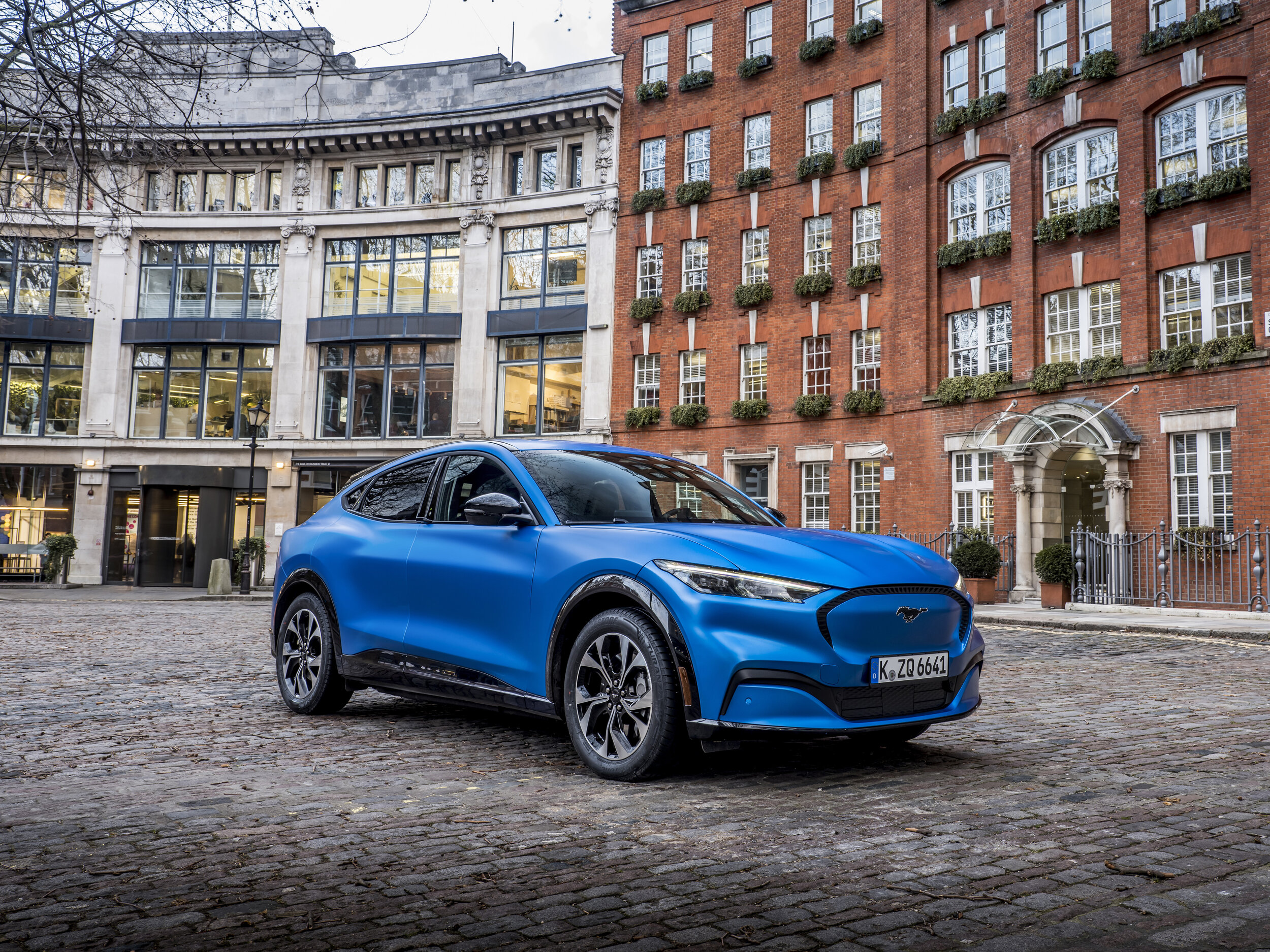
Okay, so this one’s a bit of a punt. Ford New Zealand says the only electric car it can officially confirm as a definite 2021 starter here is the plug-in hybrid version of the Escape. And, of course, they’re looking at a fully battery-propelled Transit in 2022.
When asked about the Mach-E, spokesman Tom Clancy replied: “I would love to confirm Mach-E for New Zealand – from all reports it’s an excellent and exciting vehicle – but can’t at this time.”
So that’s not a no, and the reason why there’s a chance the electric Mustang (and yes, petrolheads, like it or not, that is what it officially is) sports utility could be coming is because it’s starting to reach the United Kingdom and, also, there’s growing conviction from Australia that they’ll achieve the car before next Christmas.
What is for sure is that, whether it’s a 2021 arrival or later, there’s every likelihood NZ will at some stage be down to take Ford’s first mass-market electric car in its 116-year history.
You should be excited. Ford says this all-new car is a true pony express; the range-topping Mach-E GT will hit 100kmh in under four seconds, thanks to an all-wheel drive layout channelling the 342kW and 830Nm outputs of a 75.7kWh lithium-ion battery (a 98.8kWh extended range battery is available).
Ford is claiming a range of 480 kilometres from a full charge using its extended-range rear-wheel-drive car.

This is the mid-life update version of the car that NZ has known for more than a year. The refresh delivers a cleaner front-end design, aerodynamic tweaks and a restocked safety suite that complements improved interior technology.
It retains the single 64kWh lithium-ion battery pack, but the charging port has moved to place asymmetrically between the front headlights, having previous been sited slightly to the passenger side. Charge time is claimed to take 47 minutes when done with a 100kW DC fast charger.
We’d expect to see this in the first half of 2021.

Where Hyundai goes, the subordinate marque generally follows.
Once again, this is a facelift. There’s not too much info around, but as with the original pitch, it’s likely to be outdone by its Hyundai Kona cousin for style but
Chances are NZ will see only the more powerful of two battery options, which should see it travel 450kms between charges.

Built on Toyota’s GA-C platform, this version of the smallest Lexus crossover runs a front-mounted motor that produces 150kW and 300Nm of torque.
Energy comes from a 54.3kWh underfloor lithium ion battery offering a claimed range of around 315km on the official WLTP testing regime. It's capable of 0-100kmh in 7.5 seconds, has a top speed of 160kmh and an optimal range of 400km.
The model’s high-rate lithium ion battery is capable of DC replenishment and rapid-charging from zero to 80 percent takes 52 minutes. It features a number of driving modes so that the performance of the motor can be better managed, along with paddles to alter the strength of the regenerative braking.
Lexus says the drivetrain has been developed with a focus on on-road performance and the goal of offering a quiet and refined driving experience. Extra bracing has been added over the regular UX hybrid and the dampers reworked to maintain optimum weight distribution.
Prioing has yet to be discussed, but the plan is for the UX300e to form a new “flagship” of this family range so expect to pay more than the $70,300 asked for the current line-topping UX250h AWD F-Sport.

Two flavours for 2021 – mild hybrid and full-out electric – with a third, this delivering as a full electric but with a small petrol-fuelled engine (yes, a rotary) likely to follow perhaps next year.
The Hybrid is powered by a 2.0-litre, four-cylinder petrol engine paired to Mazda's M Hybrid system, producing maximum outputs of 114kW and 200Nm through a six-speed automatic transmission sending power to the front wheels only.
The addition of the mild-hybrid system means the model's official fuel consumption figure is reduced to a claimed 6.4L/100km on a combined cycle.
The MX-30 Electric, meanwhile, looks much the same as the mild hybrid car, save for some subtle electric badging on the exterior and a combined AC/DC charging point where the fuel cap would normally be – on the rear right-hand side of the vehicle.
The electric model is powered by a 107kW/271Nm electric motor on the front axle and boasts a 35.5kWh lithium-ion battery pack mounted beneath the floor. Range is modest, up to 200km on a single charge according to the World harmonised Light vehicle Testing Procedure (WLTP). That’s less than some of the MX-30's key competitors, but Mazda’s not sweating it. A smaller battery means quick recharging; three hours to recharge on an AC socket, or roughly 36 minutes on a 50kWh DC fast charger
In terms of sizing, at 4395mm long, 1795mm wide and 1555mm tall, the MX-30 is in the same category as the CX-30, with a 311-litre boot on both the electric and mild-hybrid variants.
The model’s most discussed design feature are pillar-less freestyle doors, inspired by those on the Mazda RX-8 sports coupe (and kinda like those on the BMW i3), which open outwards from the central B-pillar point, hinged at the rear.
The MX-30 has won a 2020 five-star rating from Europe's New Car Assessment Programme. Standard safety kit includes 10 airbags – front, curtain, front-side, rear-side, front far-side (driver) and a driver’s knee – plus emergency lane keeping with blind-spot assist and something called road keep assist, which helps you stay on track even in the absence of lane markings.
There’s also ‘turn-across traffic functionality’ which can intervene in collisions at intersections by activating the smart-brake support system.
The cabins of both variants are alike. An 8.8-inch screen that sits at the top of the dashboard controls the infotainment system via a rotary dial, while a second lower 7.0-inch touchscreen provides access to the climate controls.
The floating centre console has cork accents as a nod to the brand's history as a cork manufacturer.
The majority of materials used in the MX-30's interior are sustainably sourced or recycled, from the vegan leatherette upholstery om the seats, to the door trim materials which are made from recycled plastic bottles.

The latest Leaf but featuring a 62kWh battery (up from 40kWh) that can propel the small five-door 384 kilometres on a single charge, representing a 110-kilometre improvement over the standard edition.

In addition to the ‘E’ also referencing ‘electric’ and the ‘q’ conforming to an in-house naming practice, the name also derives from the Gaelic girl’s name Enya (which means ‘fire’ and ‘kernel’). The iV part is less clear.
Good background to chuck into the inevitable discussion owners of this five-seater medium crossover will enter into with those curious to know more about what will not only be the first fully electric Skoda to come on sale here but also the first of numerous cars utilising a Volkswagen Group underpinning that are set to hit New Zealand, not just as VWs but also as Audis and a SEAT.
Skoda’s status as the debutante for the MEB platform on local turf is a happenstance that hasn’t occurred in most places; but fact is VW New Zealand has resigned to not seeing the ID models that advance this tech until at least 2022, starting with the ID 4. Same goes for SEAT, with its car, the El Born.
Enyaq’s NZ release (and price) has yet to be shared, but the local distributor has already started the pre-launch build up. Insofar as specification goes? Well, there’s likely to be plenty to think about; the factory is prepping Enyaq with the options of three battery sizes, five power variants and a driving range of up to 500 kilometres. It also provisions in rear-drive in entry form and four-wheel-drive further up the range and a performance all-paw RS edition with 225kW is on the cards.
In size Skoda’s EV slots between the Karoq and the Kodiaq, being 4648mm long, 1877mm wide and 1618mm tall, on a 2765mm wheelbase. It classes as an SUV, though realistically that’s just a convenience. There isn't a great deal of ground clearance so don't expect to go very far off-road in it.
However, it is designed to tow (if only up to 1200kg) and will is as roomy as the Kodiaq, with a big cabin – made all the more spacious by the lack of a transmission tunnel – and a 585-litre boot. Unlike some other electric SUVs, there isn't a storage area under the bonnet.
The line starts with the 109kW Enyaq iV 50, driven by a rear-mounted electric motor (so, rear-wheel drive) with a 55kWh battery pack and a maximum driving range of 340 kilometres.
Above this is the Enyaq iV 60, also rear-wheel drive but with a 62kWh battery and a 390km driving range, then the Enyaq iV 80, the highest choice in the rear-motored set. It has an 82kWh battery offering 150kW and up to 500 kilometres’ range.
Beyond this are dual-motor all-wheel-drive 80X and RS variants, also with the 82kWh battery pack, but with a second electric motor driving the front wheels. In this form the 80X has 195kW and the RS another 30kW more. The extra grunt comes at expense of range, but not greatly, with 460km claimed. The RS is the only variant that Skoda has announced a 0-100kmh time for; claiming it’ll smash that in 6.2 seconds. That’s 0.8s better than the fastest current Kodiaq, the RS.
Fast charging is also promised with an 80 percent 'fill' possible from 40 minutes at a 125kW DC-powered station … if talking about the 82kWh models. The onboard 11kW charging unit will enable users with a suitable domestic wallbox to replenish the battery charge in six to nine hours, depending on battery size.
The cabin eschews the usual Skoda instrument displays and instead takes a small digital display ahead of a two-spoke steering wheel plus an augmented head-up display that projects onto the windscreen, as in the Volkswagen ID.3 hatch (which isn’t being considered for NZ incidentally). A centrally mounted freestanding touchscreen sits atop the dashboard, and this will come in two sizes, 10- or 13-inch, depending on model.
Skoda’s bent for practicality reveals with decent interior storage, including a generous console between the front seats. It gets a large wireless charging pad that can charge two phones simultaneously. Oh yes, and it has the trad umbrella.
Skoda has a wide variety of specification grades, starting with Studio, available in the Enyaq 50 alone. Additional Loft, Lodge, Suite and Eco Suite trim levels will be available on the 60 and 80 models, and Eco Suite features more sustainably sourced materials. The 60 and 80 versions will gain the largest touchscreen display, a 13-incher.

Again, a bit of a punt with this one, at least in respect to timing, as Tesla no longer bothers communicating with media about its cars.
The model, of course, is not secret; the Model Y is a five-seat crossover all-electric vehicle built on the same third-generation platform as the Model 3; think of it as being a more practical, higher-riding stablemate that stands as a smaller alternate to the Model X, albeit not as wacky – so a conventional set of doors here.
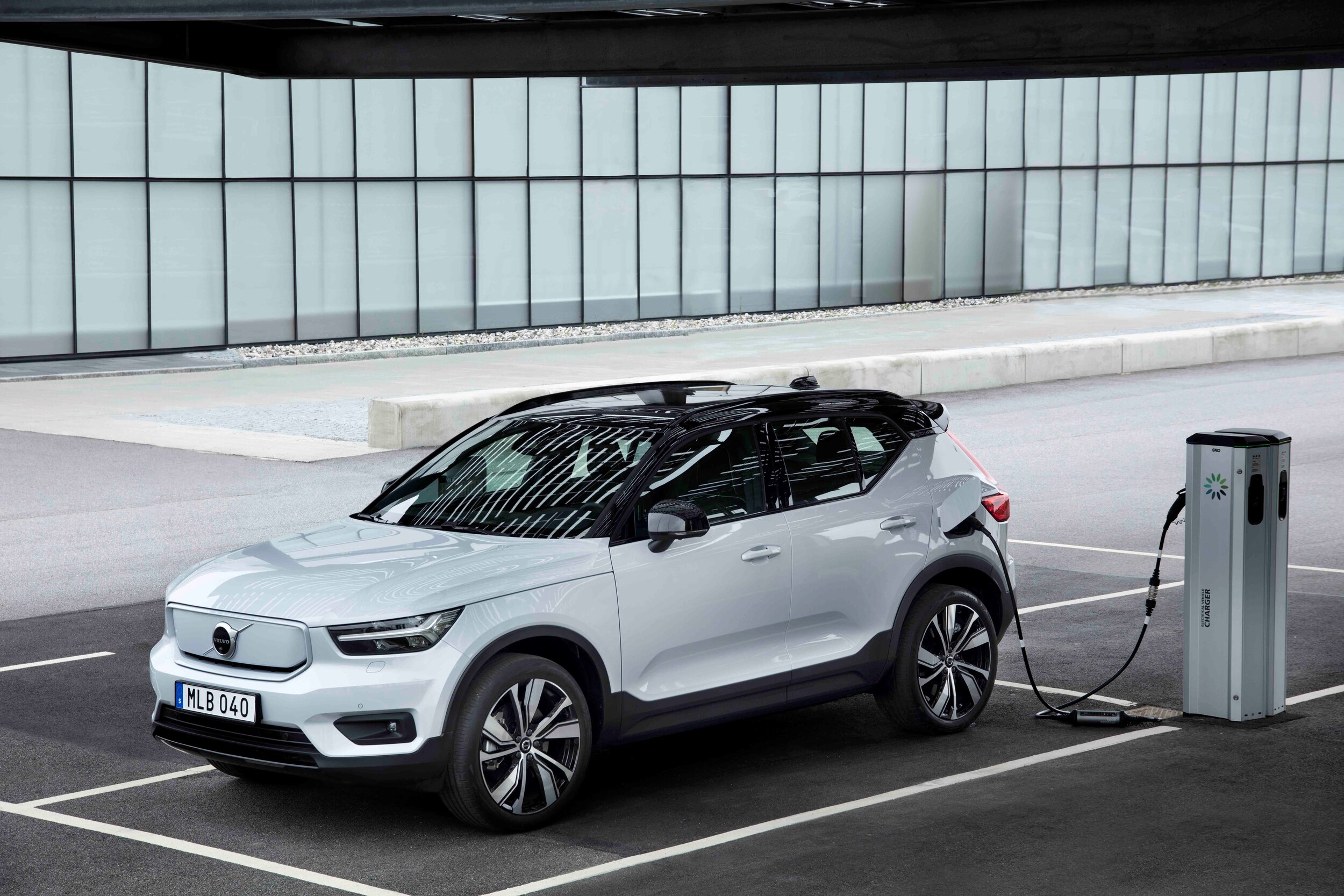
A dead-ringer to the fossil-fuelled XC40 from the kerbside, and from overseas’ reports, it’s not so different in driving feel, either.
Of course, it is a radical departure, in being the first Volvo to sell here – arriving mid-year or so, by the way – to forego hooking up to Big Oil.
Here two electric motors provide a very healthy 304kW and 660Nm to all four wheels. A 78kWh battery (that can charge to 80 percent on a fast charger in 40 minutes) should provide enough juice for the XC40 Recharge to travel between 350-400kms in the real world.
The strength of the powertrain is sufficient for a claimed 0-100kmh time of 4.9 seconds.
When discussing Volvo, you’ll be wondering about the chances of seeing anything from Polestar, an offshoot which is all about passenger EVs with a performance twist.
Good news. Volvo NZ is in discussion with Polestar with intent to furnish the Polestar 2 (below) which, unlike the preceding Polestar 1 is produced in right-hand drive.
It will feature 300kW of full electric power and boast a range of 560km. But it won’t be available before 2022, says Volvo NZ boss Coby Duggan.


IMPROVED range from the flagship plug-in hybrid drivetrain is promised with a mid-life update to the Mini Countryman.
The biggest model to bear the Mini badge continues with the current engines choices, though all have been reworked to improve economy and efficiency. Yet there are no alterations to outputs.
So, the entry Cooper’s 1.5-litre three-cylinder continues with 100kW and 220Nm; the Cooper S 2.0-litre four-cylinder still puts out 131kW and 280Nm and the Cooper SE ALL4 maintains total outputs of 165kW and 385Nm.
However, the unit that uses a 65kW/165Nm electric motor powered by a 9.6kWh lithium-ion battery pack now claims an electric-only range of up to 61km, against 40km previously.
The engines all have particulate filters and the engines in the Cooper and Cooper S now have an exhaust manifold integrated into the cylinder head. A more efficient starter-generator system is standard across the range.
With the cars not coming until the end of the year, Mini isn’t yet keen to lend details on local market specification and, of course, there’s nothing yet on pricing. The hit shouldn’t be too extreme, though, given that sticker revisions in its home country have been modest.
External revisions are similar to those already meted to the three- and five-door hatchback two years ago the the Clubman in 2019.
A new grille with hexagonal comb mesh and a new bumper below differentiate the incoming line from the 2017-released originals. The rear also gets a nip and tuck with Union Jack taillights.
The interior delivers change with redesigned dash and layout, including a “refined surface around the circular control unit” which measures 8.8-inches in diameter and hosts MINI Connected features including Navigation Plus and Amazon Alexa integration and Apple CarPlay.
Equipment on the three trim grades includes 16-inch, 17-inch and 19-inch alloys, digital instrument display, roof and side mirror caps finished in either body colour, white, black or silver depending on model, piano black exterior and interior trims, plus a new range of materials and leathers is offered, including new blue and brown seat colours. As always, there’s an extended range of personalisation options and Mini accessories, including a rear bicycle rack, roof box, luggage mat and all-weather floor mats.
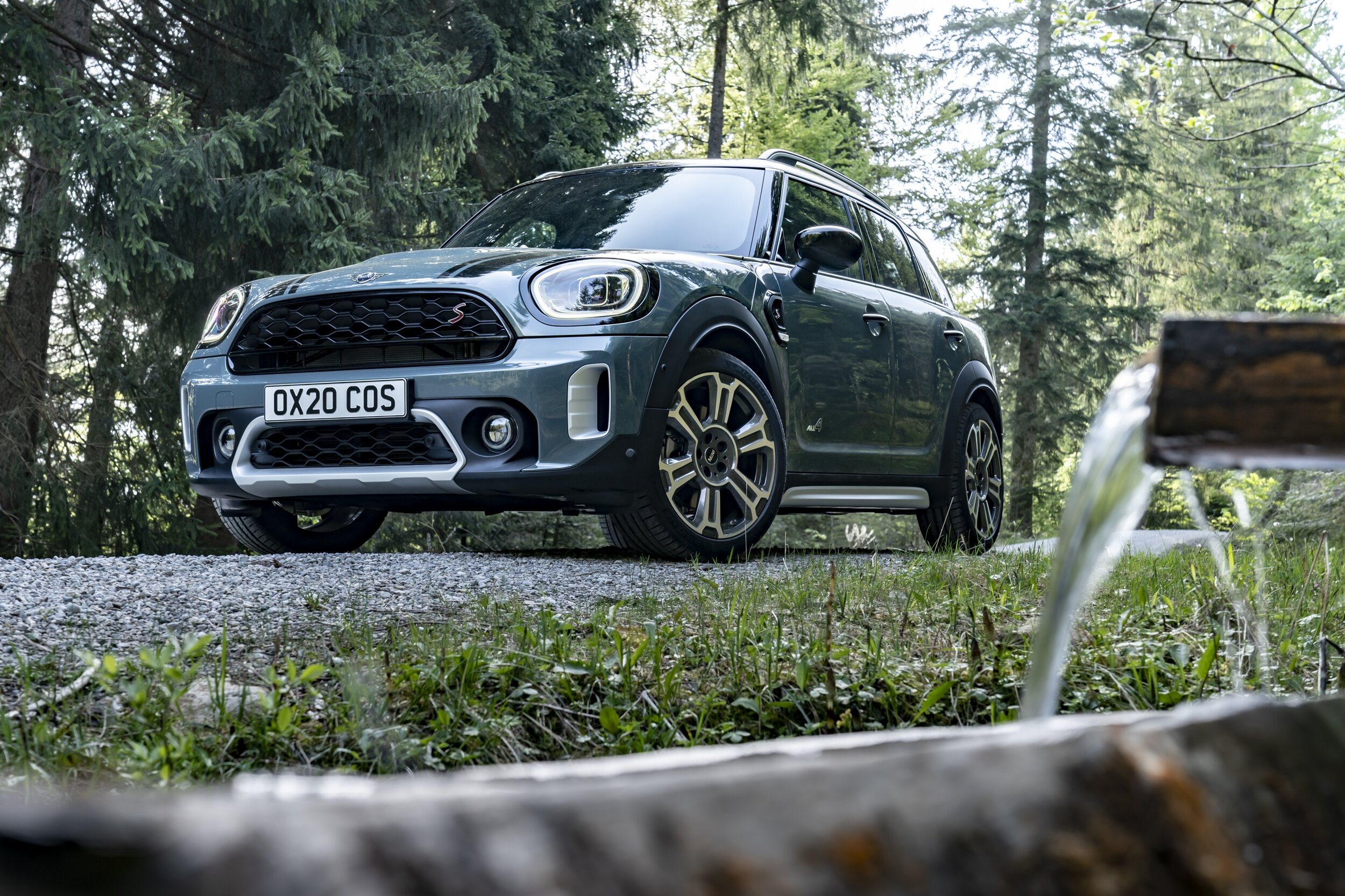
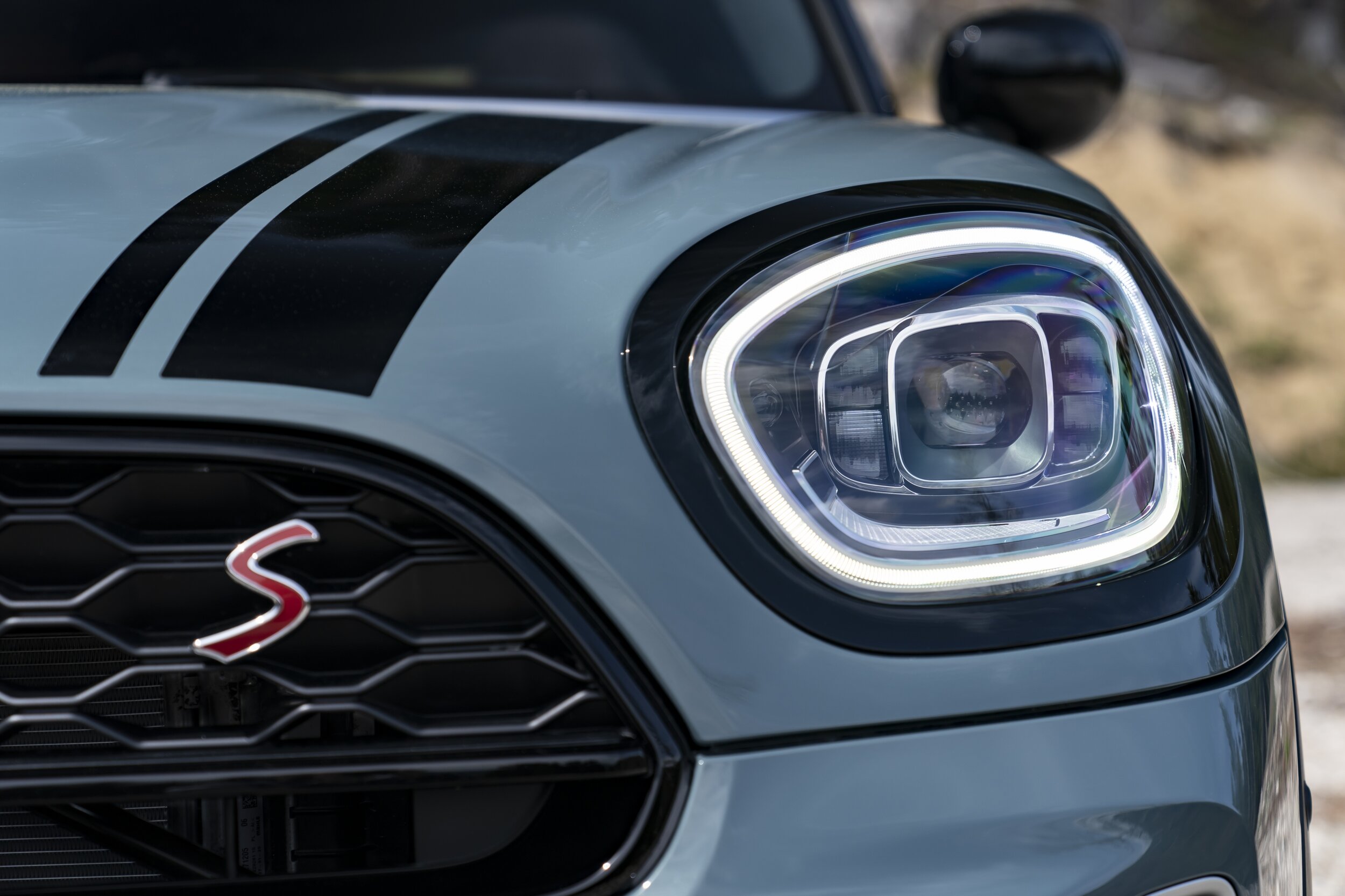

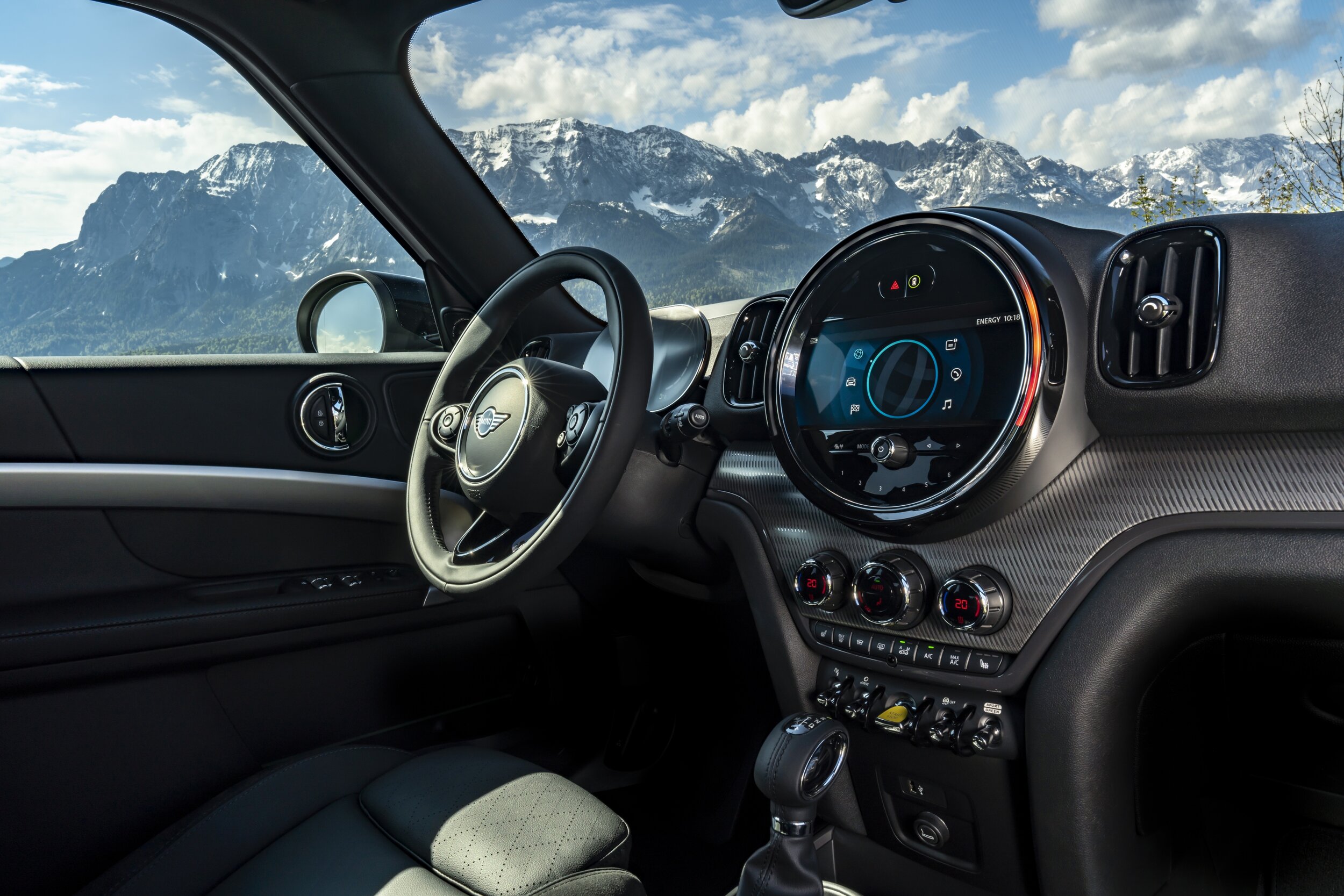
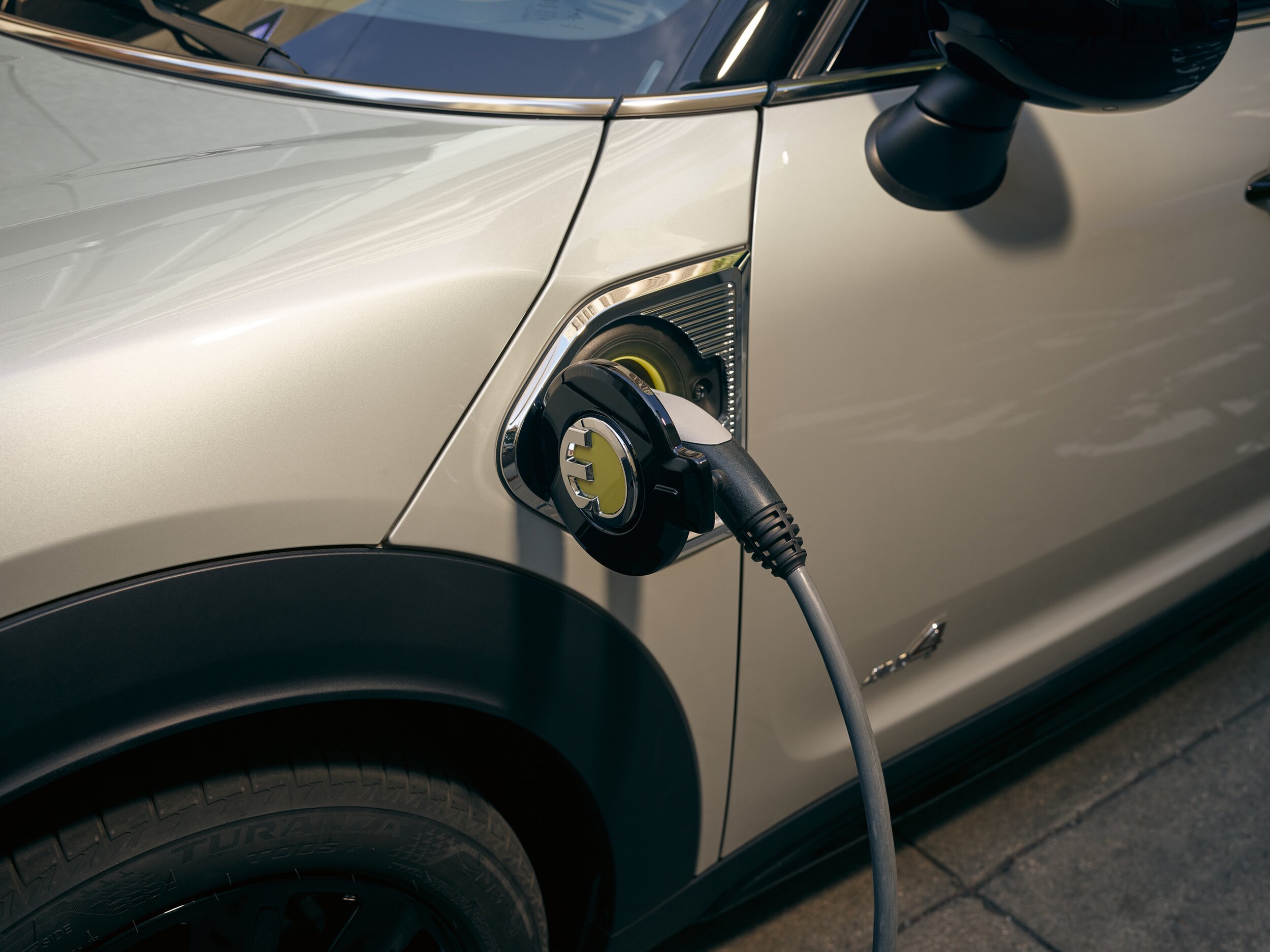

PABLO Picasso reckoned every child is an artist. We think every adult who is a kid-at-heart also deserves to be considered in the same light.
It’s not easy to buy a car during the Covid-19 crackdown but the world’s auto makers have been quick to cash in exploring the limits of our creativity, by piling out a ton of car-themed design activity to lift the spirits of anyone bubble-bound and stuck in a rut.
So, fire up the printer, curse at the lack of inkjet cartridges, then sharpen your pencils and pick your way through the following.
The Munich make’s New Zealand distributor has gone all out to bring home the joy of driving with a downloadable ‘do-it-yourself’ M-Town entertainment packs – one for building a race-track, and the second for building you’re a car – with handy instructional videos, filmed completely under lockdown at home (using high end lighting techniques like opening and closing curtains).
The beauty of this concept is that it goes big on stuff you’ll have readily at hand.
Gabrielle Byfield, Head of Marketing for BMW New Zealand, commented: “Kids may be short on new toys, but they aren’t short on creativity. With regular household items like leftover cardboard boxes and depleted toilet rolls, and you can challenge your kids to create some BMW magic at home.”
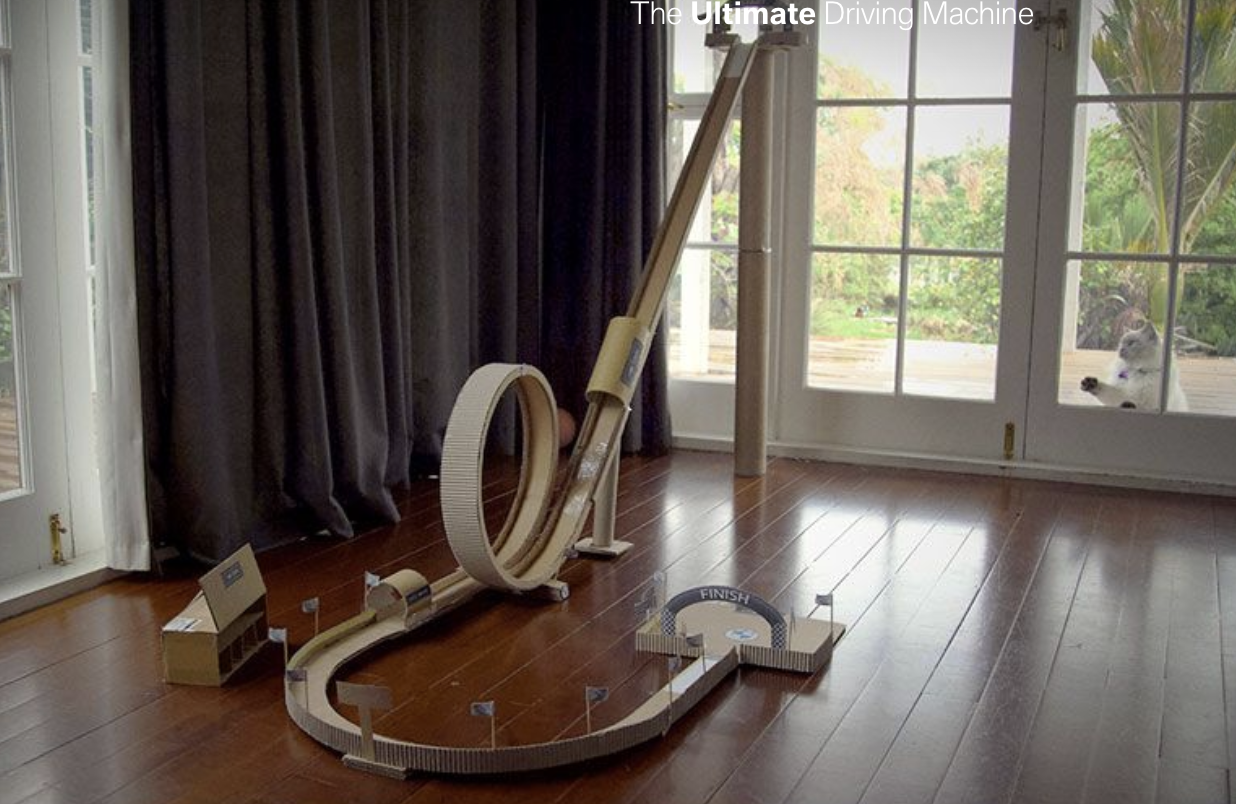
It's not just for your entertainment, either. This is a sharing thing. So, ensuring your cars are in the appropriate livery, from the Race Track Decals pack, just share a share a snap / video of your racetrack in action, for uploading to BMW Instagram, make sure you #BMWDIY
The downloadable ‘Play at Home’ pack includes flags, starter grids and car decals to decorate your own BMW and M-Town track and are available here: https://www.bmw.co.nz/en/topics/offers-and-services/promotions/DIY-M-town.html.
Just look up ‘Fiatforkids’ as internet images and you’ll discover heaps of drawings ready to colour-in.

Henry’s mob is another that has put a lot of effort into stopping you from feeling too blue.
The ‘Ford family fun hub’ has a heap of pictures to colour in – not just sweet racers the Focus ST, Mustang, and GT supercar but also the Kiwi favourite Ranger ute – and there are also challenges in dot-to-dot and maze formats. A spot the difference, too.
If they seem a bit lame, then try your skill at building the new Puma SUV in origami. This one has its own instruction sheet.

Japan’s ute specialist gives you opportunity to have early ownership (or at least allegiance) to the new D-Max set to launch later this year. There’s a selection of images to colour-in, dot-to-dots, a word search and spot-the-difference.
If you fancy yourself as a budding talent at race car liveries, try your hand coming up with a cool scheme the i-Pace eTrophy VIP electric car.
https://media.jaguarracing.com/news/2020/03/design-your-own-jaguar-i-pace-etrophy-vip-car-0
Have you already configured your dream Defender on the Land Rover site? If you can’t find the colour of your choice, how about making your own one here?
https://www.dropbox.com/sh/2deouwl73fxb7vd/AABBCxUZqmvXBtjsy2FY7jHja?dl=0
No argument, Lexus LC 500 sports coupe is a sharp looker, all the more so in the motorsport version as raced by our own Nick Cassidy in Japan’s Super GT.
The deal here is that you can create your dream racing car livery for that car, remembering “to stay within the (racing) lines.” Good joke, right?
Generously, this illustration also includes rival brands’ racers. BMW, Audi and Aston Martin also feature because this scene commemorates the 2019 race when Super GT cars from Japan and cars from the German DTM series competed against each other for the first time. The first of these so-called ‘Dream Races’ was held at Fuji Speedway, with a certain Kiwi taking victory.
Download the Lexus LC 500 colouring pages
‘The world’s best budget sports car’ seems a heck of a hefty mantle, but assuredly it’s one this wee beauty has had no trouble carrying over four generations.
The MX-5’s popularity is such it’s hard to imagine anyone could turn down this opportunity to build your own. Yes, of course it’s out of paper, but still, what a little beauty, right?

The world’s oldest car maker now has so many vehicles that choosing just one to feature for a colouring-in portrait was clearly just too hard. So, basically, if you go to their Covid-19 fun page you’ll find a subject to suit anyone here, with a comprehensive range of pages with all sorts of models, whether they’re classic or modern. Plus the current Formula One car.
Another brand to add a neat twist to the colouring concept by virtue that, in addition to provisioning a range of images of current products, it also allows you to test your artistic skills of cars that might, or might not be, in this brand’s future. Some of these concepts are really cool.
Alfonso Albaisa, Nissan's senior vice president for global design, and Nissan designers across the world put this effort together and they’re truly keen to see how you get on with adding your influences, so is asking for finished images to be posted on social media with #drawdrawdraw. Albaisa says Nissan designers will be looking out for these drawings and interacting with the talents.
All is explained in the video.
http://www.supercoloring.com/coloring-pages/transport/cars/nissan
The Karoq is a cute compact crossover with heaps of charisma and no shortage of perky practicalty … and I’m not just saying that because I happen to be an owner. Well, okay, perhaps my view is a touch skewed. Still, it makes for a fun build project. Thanks to Skoda NZ.
https://www.skoda.co.nz/company/kids-activities
With Brendon Hartley now part of the Toyota Gazoo Racing effort, why not add some colour to his title-winning TS050 Hybrid, or perhaps one of the predecessor cars that ran at Le Mans? The link goes to a download that expires at the end of this month, so if you’re in for the challenge, make haste.
You can download the TS-series here
No need to use your drawing sticks on this one; the cars are already coloured in. Unfortunately, as a Toyota UK delivery, the selection doesn’t include the NZ racing series versions, but still.
https://media.toyota.co.uk/2020/04/make-your-own-retro-liveried-toyota-gt86/

PLUG-IN electric fare will continue to present in strength for BMW locally even after the next round of fully electric product starts rolling in, with a fuel cell alternate also theoretically possible.
This is impressed by BMW Group New Zealand as it prepares to release another new electric pathway model - a battery-assisted edition of the X3.
Brisk business is forecast for the X3 xDrive30e, a $107,700 offer that becomes the seventh PHEV model in the local lineup.
In this car a 2.0-litre 135kW four-cylinder petrol marries to an electric motor to allow electric-only range of 55km, fuel consumption as low as 2.1 litres per 100km, a 215kW/420Nm output and 0-100kmh in just 6.1 seconds.
It’s an especially good fit as soft-roaders – or sports activity vehicles in BMW-speak - are achieving more consumer consideration than any other car type and mains-replenished drivetrains are also resonating with Kiwis, the brand’s managing director for New Zealand says
The present impact - and potential long-term implication - of the coronavirus emergency makes it challenging to give indication on supply strength or how well it will sell.
Yet Karol Abrasowicz-Madej has every confidence in PHEV and EV cars continuing to gain traction here, with an 88 percent lift between 2018 and 2019.

For sure, we’re still talking modest volume. “The total new car market was around 100,000 passenger registrations in 2019 – of those 2809 were electric, around 2.7 percent.”
However, BMW NZ is happy to hold dominance in that sliver and its PHEV lineup – which despite the combustion component meet the accepted definition of being electric cars – allows it to provision more EV choices any other make and especially good grip within the premium segment.
And this will only increase as it is looking at “any opportunity” with that product.
“There is a market, the buyers are out there and we are looking for an opportunity to capitalise.
“Our strategy is to unfold and unroll all available product to New Zealand. We know it will be good for us and customers. In our opinion plug-in hybrids are perfect for this market.
Overseas’ reports suggest PHEV is also coming to the 3-series Touring wagon in both two-wheel-drive and all-wheel drive guises, and the X1 and X2 compact crossovers. In all, BMW has promised to have 25 kinds of electric vehicles in circulation by 2023.
With so many models going battery assist, does it stand to reason that the tech will inevitably become core to the majority of BMWs sold here?
Abrasowicz-Madej doesn’t deny the possibility, but prefers not to give an estimate of how great that penetration might be in one or two years from now. It all depends on the market on how the market will develop. It’s pretty clear 2020 won’t be a brilliant year for anyone. So much depends on, for instance, how quickly business confidence is restored.

One prompt might lay with our leaders. Belief that the sector also greater Government-led stimulation to really get going also remains a passion project for Abrasowicz-Madej. Regardless that it appears to have derailed, the Clean Car proposal that would have effectively subsidised models that achieve low emissions and economy and penalise those that do not remains important, he says.
He conceivably has a good inroad to push his thoughts that with those walking the corridors of power. The Seven Series is, of course, on the Crown VIP roster and conceivably the next generation might keep that job, with Munich confirming it’ll outlay in fully-electric format – exactly the configuration the Government wants. So will BMW pitch?
Abrasowicz-Madej is diplomatic. “The Government is one of our customers. It would be a pleasure to take part on any bidding process.”
As much as the PHEV push is now firmly cemented, that’s not to say that traditional combustion engine models will be ignored: Hence why the brand is just as keen to deliver to an even more exclusive audience with the X5 M and X6 M.
“We have buyers who have preference for electro-mobility and others who prefer combustion engines. We say we can attend to both; our belief is in the power of choice.
“We are leading in the market for electrified powertrains and have the widest range and there is good demand for that. We are a brand that is intent to stay on top of technology. We know that what we are doing is right.”
X3 fans will be further drawn into a battery-compelled future when the iX3 comes here, in 2021 all going to plan. The latter and the xDrive30e will be sold side-by-side so as to enable buyers to have a full span of choice, he says.
In Europe the PHEVs have been at the forefront of BMW’s successful achievement of a range-wide reduced 95 grams per kilometre CO2 emission target set by the European Union.
Overall, BMW’s fleet fuel consumption and CO2 emissions have been cut by more than 40 percent over the past 13 years. And with the ongoing electrification process, the company claims CO2 emissions this year will be 20 percent lower than last year’s count.
The focus on this product might raise questions about where BMW stands on full electric and hydrogen, but shouldn’t.
As much as the PHEVS are setting the pace now, the long-term and priority thrust of the parent brand’s electrification plan still involves going to fully electric cars.
The MINI Cooper SE is still on track to land mid-July and NZ orders are included in a list of 7000 confirmed international reservations
It would seem a safe bet to think the new i4 sedan, though still officially a concept, is perhaps just two years away and, of course, the battery-compelled Seven-Series limo has been signed off, alongside full petrol, PHEV and another diesel (the engine currently favoured for VIP use).
All are understandably quite different propositions to the only electric BMW in circulation at the moment. Ironically, given how much of a pathfinder it has been, the now aged city-centric i3 is unlikely to enter a second generation.
In addition to those models, BMW has also reiterated seriousness about also developing a production fuel cell car.
Klaus Fröhlich, member of the board of management for Research and Development, BMW AG, has indicated the fuel-type could become a 'fourth pillar' of BMW’s future mobility stable of propulsion systems.
The intent is demonstrated by a model first revealed at last September’s Frankfurt motor show. The I Hydrogen NEXT (see video below) wouldn’t seem out of place if it hit the street tomorrow, as it is effectively a re-engineered X5, albeit with a handful of cosmetic alterations to mark it as one of the company’s eco models.
The car’s pair of eDrive electric motors, (one for each axle), with a combined output of 274kW, were developed the iX3.

The fuel cell tech might also seem familiar, too. It has been co-developed with Toyota, whose expertise in this field is demonstrated by its hydrogen-fed Mirai car, which is about to enter its second generation.
As much as BMW insists I Hydrogen NEXT requires something out of its hands - a refuelling infrastructure - it has nonetheless determined to begin a pilot production phase in 2022 and could have it in full production by 2025.
Instead of pulling stored electrical energy from a battery pack, as mains-fed electric cars do, the i Hydrogen NEXT generates its own electricity through a chemical reaction between stored hydrogen and oxygen from the air, using a hydrogen fuel cell. As such, the only emissions generated by the vehicle are water vapour.
The fuel cell is supplied by two 700 bar storage tanks, which occupy the same space as the gearbox and driveshaft in the combustion-engined X5. Together, the tanks can hold six kilogrammes of hydrogen. Refuelling also only takes around four minutes, which is a huge saving over the hour-and-a-half average charge-times of current conventional electric vehicles.
Other claimed advantages a hydrogen-electric vehicle has over a traditional EV include suitability for towing and no compromises on passenger comfort, due to the lack of a heavy lithium-ion battery pack and the stiffer suspension required to support it.
Interest in establishing a hydrogen network is taking root, and while the initial consideration is to first focus on heavy transport needs there has been talk of a refuelling network. But if it all comes into play?
“Hydrogen has challenges … there are still bottlenecks when it comes to a supply network and establishing hydrogen stations. But if the technology keeps developing on that side … well, maybe it is also an option for the future.”
MotoringNZ reviews new cars and keeps readers up-to-date with the latest developments on the auto industry. All the major brands are represented. The site is owned and edited by New Zealand motoring journalist Richard Bosselman.